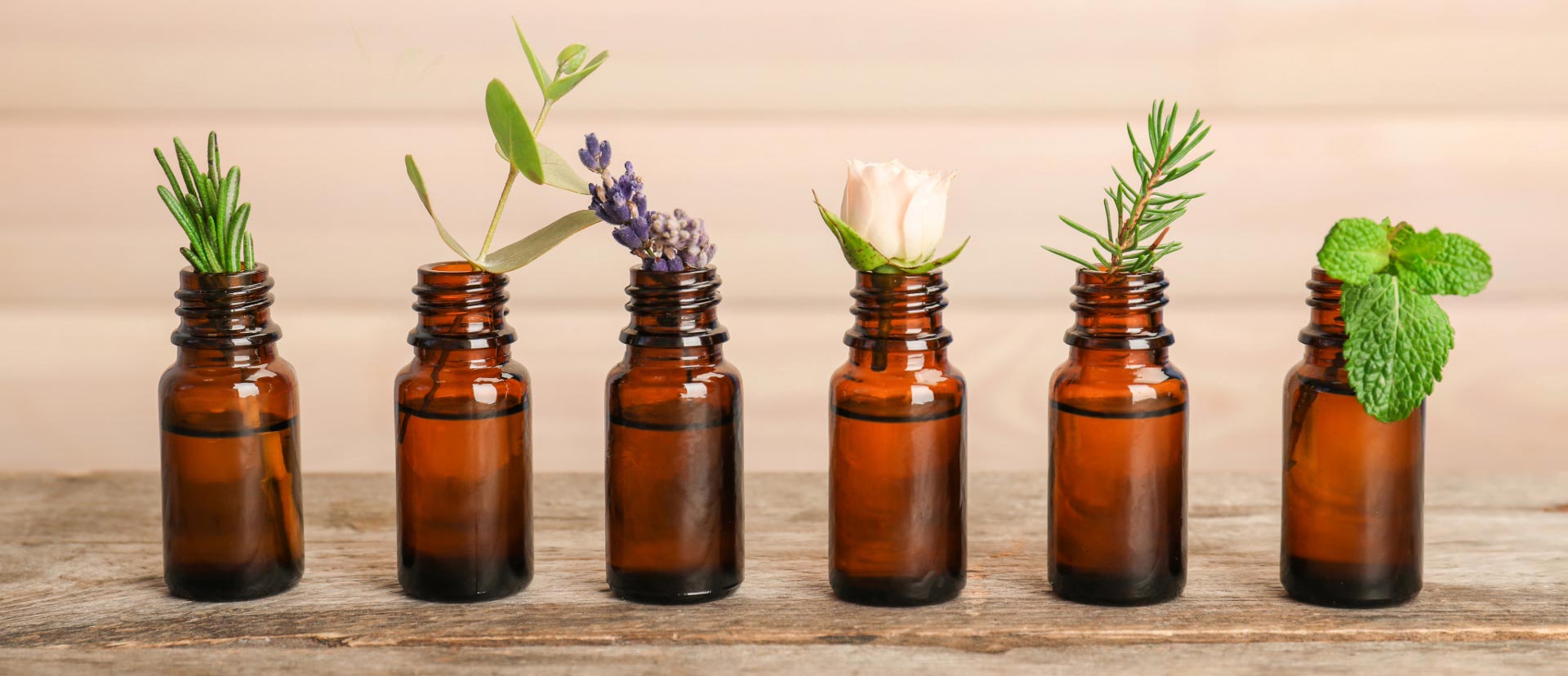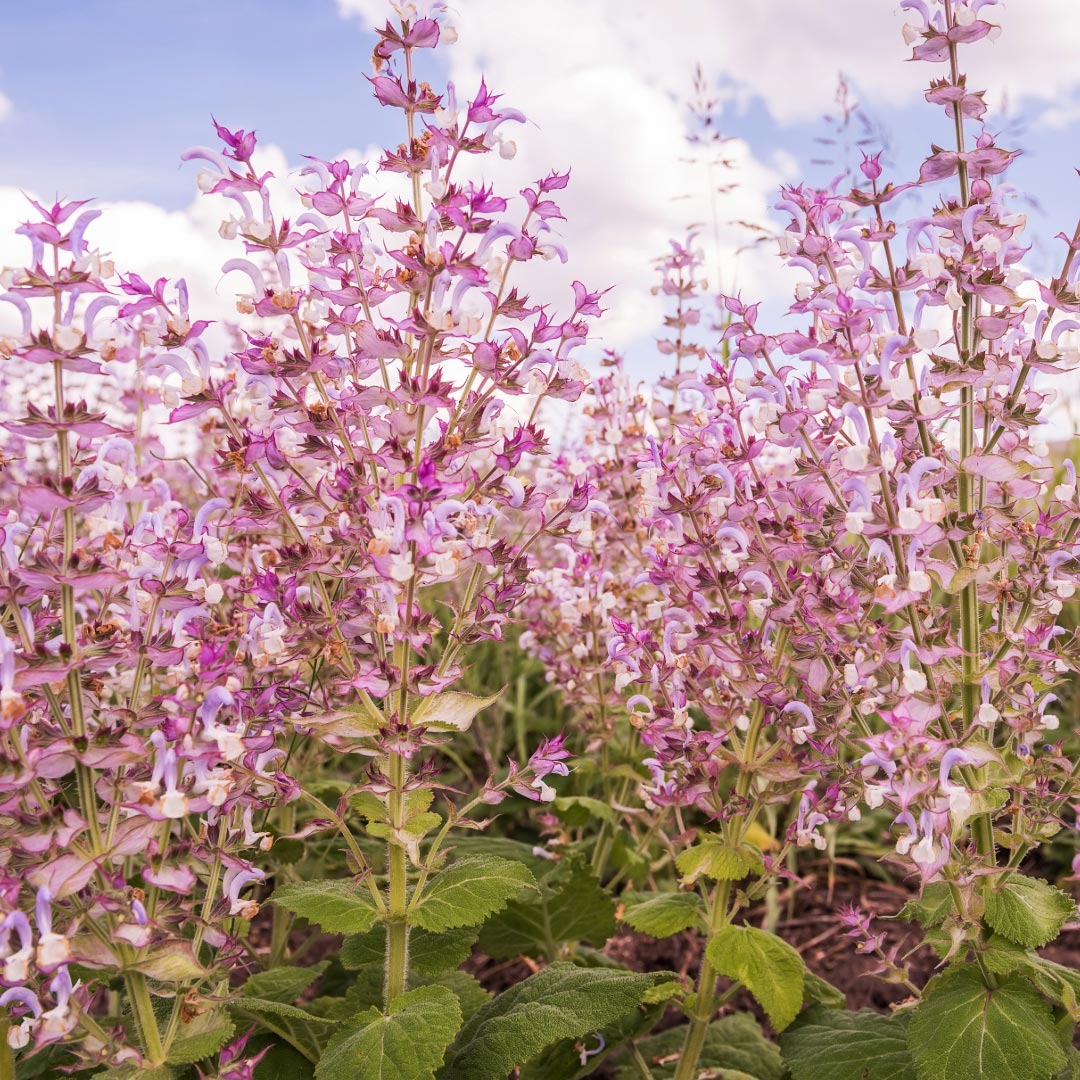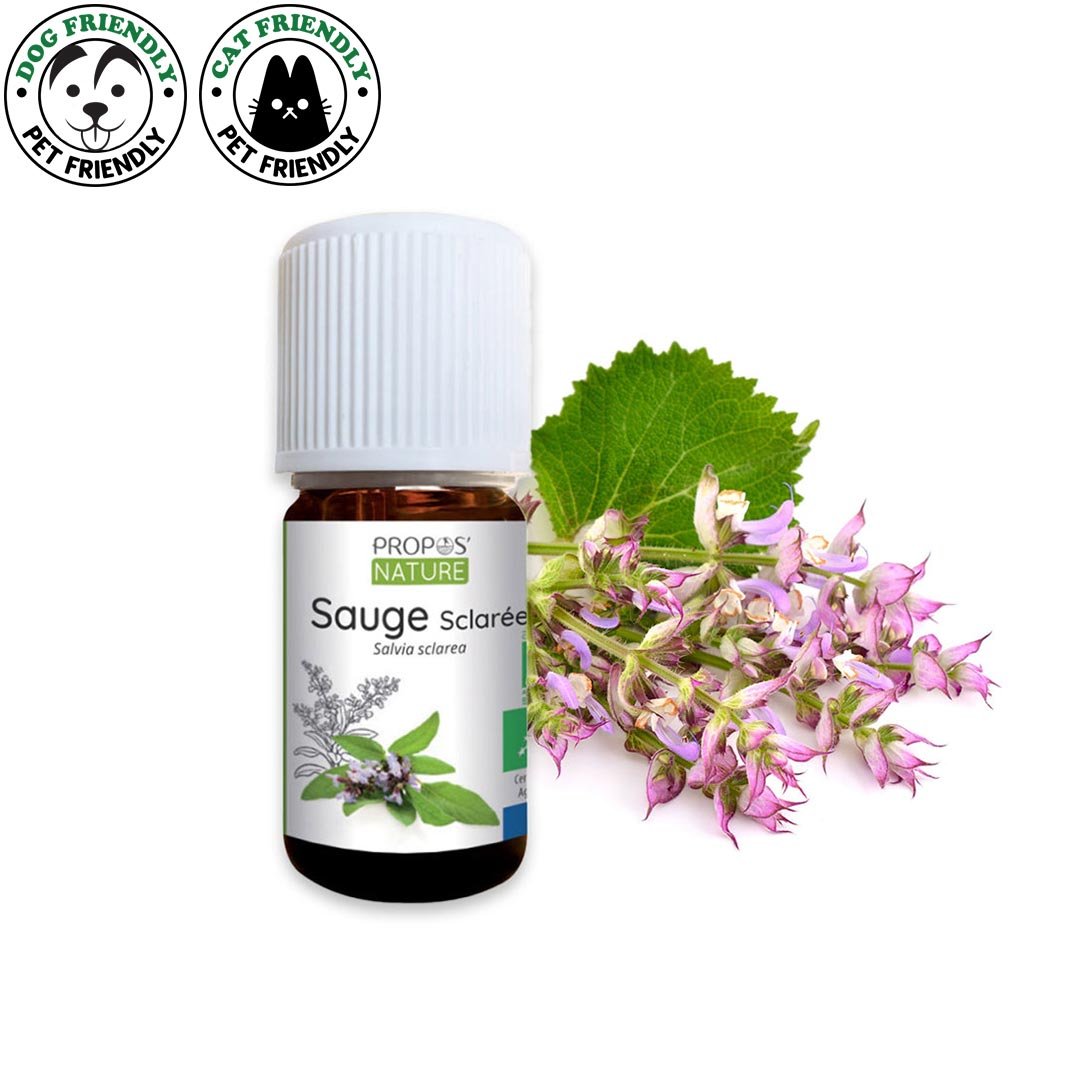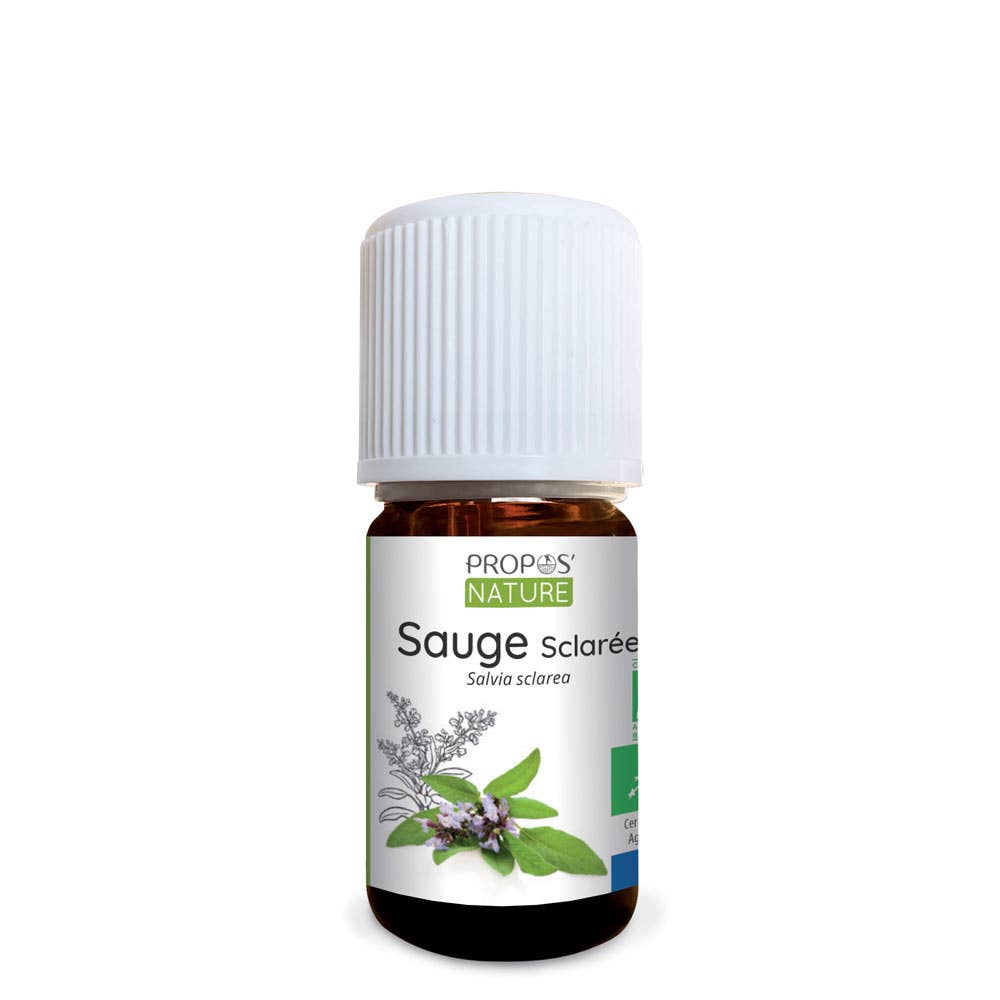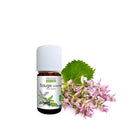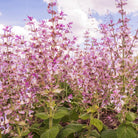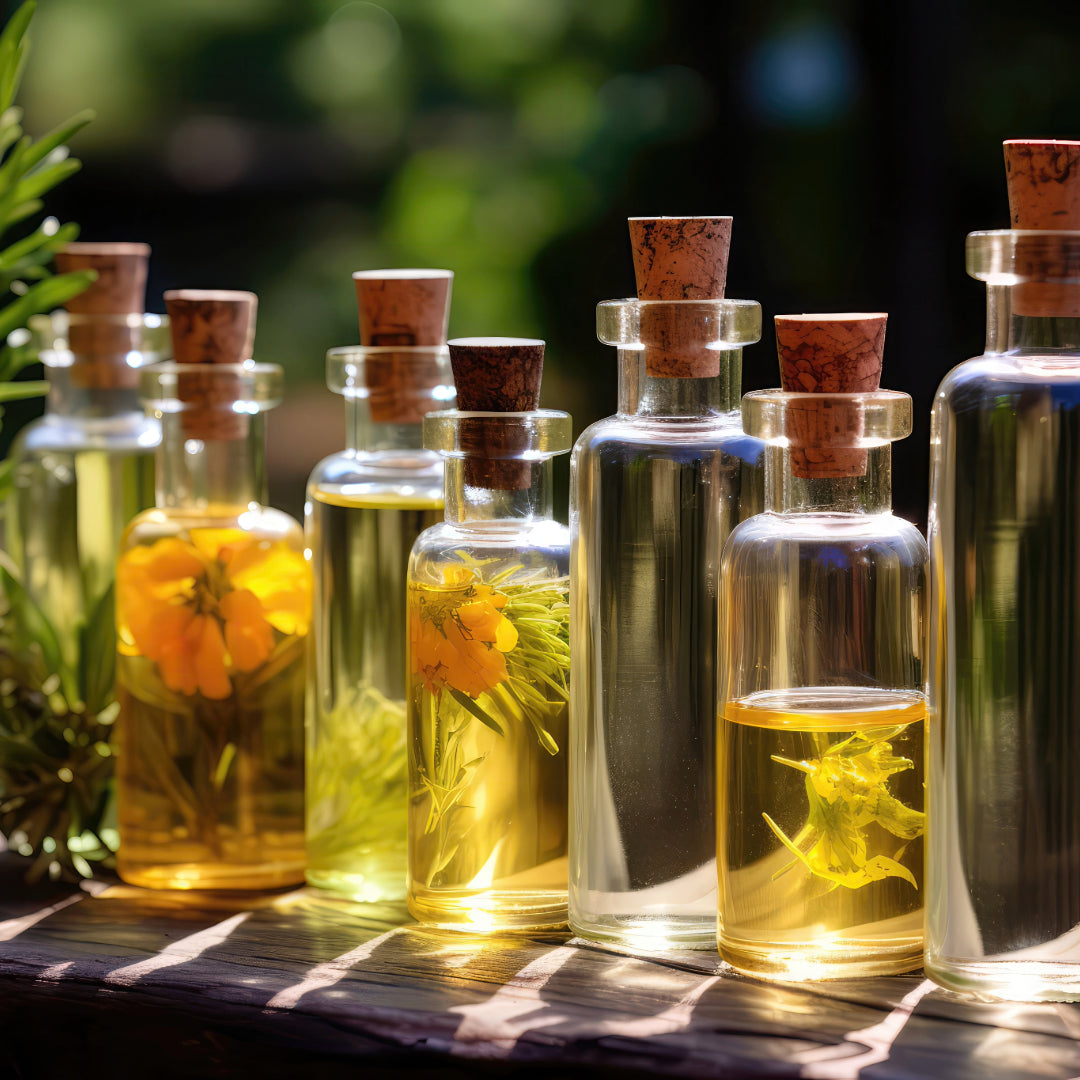Exclusive Guide to Clary Sage Essential Oil


Salvia sclarea L.
Origin: France
Distilled part: Flowering stems
Extraction method: Steam distillation
Cultivation: Certified Organic farming
Botanically and Biochemically Defined Essential Oil (HEBBD), chemotyped (HECT)
Color: Colorless to yellow-brown
Scent: Sweet, ethereal, herbaceous note with an amber undertone, sometimes slightly pungent
Note: Middle note
Plant Family: Lamiaceae/Labiatae




SUPER POWERS
Analgesic
- pain killer, reduces pain
Antibacterial
- kills bacterial growth or prevents bacteria from growing
Antidepressant
- lifts the symptoms of depression such as low moods and sadness
Anti-inflammatory
- reduces inflammation and swelling
Antiseptic
- prevents or combats bacterial infection
Antispasmodic
- prevents or relieves spasms
Antisudorific
- prevents sweating
Calmative
- sedative calming effect
Hypotensive
- lowering the blood pressure
Emmenagogue
- provokes menstruation when periods are irregular or missing
Nervine
- strengthens and tones the nerves and the nervous system
Relaxant
- promotes relaxation or reduces tension
Restorative
- ability to restore health, strength, or well-being
Sedative
-reduces mental excitement or irritability, and reduces physical activity
Tonic
- refreshes, revitalizes and invigorates body functions

USAGE TIPS

PMS
PMS; menstrual issues, hormonal imbalance
Clary sage helps balance out high estrogen levels.
Add 5 drops to 1 teaspoon (5ml) of carrier oil like jojoba or coconut oil, and massage it into the areas of concern. Inhale or diffuse clary sage at the same time, add 5-10 drops in your diffuser or smell directly from the bottle for 2-3 deep breaths.

Muscular, joint pain or inflammation
Add 7 drops of Clary sage essential oil to Epsom salt or 1 teaspoon (5ml) of carrier oil and swish it around in your bathwater before you enter the bathtub.
or
Make a hot compress to put on the area of distress:
In a bowl with warm water place 4 drops of Clary sage and 4 drops of Frankincense. Use a 100% natural cloth, unbleached if possible. Put the cloth in the bowl squeeze out the excess water, and then place it over the area of concern. Repeat. Hot compresses increase the circulation to the area, while cold can decrease circulation.

Depression
As an excellent antidepressant Clary Sage is able to induce feelings of optimism, joy, happiness, and hope. It uplifts spirits and helps you to create a positive outlook on life.
Put 4 drops of clary sage in your diffuser to clear the air of negative energy, or mix 4 drops with 1 teaspoon (5ml) of carrier oil, and massage over the heart area.

Menopause
Clary sage helps boost mental strength, alleviates low moods, fight depression, and reduce bloating because it regulates female hormones. Mix 5 drops in 1 tablespoon (15ml) of carrier oil, and add to a warm bath, or use 4 drops in 1 teaspoon (5ml) of carrier oil, and massage into the feet. Diffuse 5-8 drops in a aroma diffuser in your home.
Food
Food flavoring (FEMA n°: 3043, CoE n°: 64n)
Food dosage: 1 drop in a dish for 5 people (never exceed 2%)
Always use essential oil diluted in a suitable medium (example: vegetable oil, honey, etc.)

Pick-me-up diffuse blend
Mix 7 drops of clary sage with 10 drops of frankincense, and 8 drops of orange sweet essential oil in a bottle with a dropper. Gently shake the bottle. Add 5-10 drops in your diffuser and feel amazing.

Dandruff
Mix 7 drops of clary sage with 1 tablespoon (15ml) of olive oil or coconut oil, and massage into the scalp. Leave for 20 minutes and then wash the hair (Add shampoo to the hair first and then add water and wash as normal.)

Headaches
Use 3-5 drops of clary sage essential oil in a diffuser to relieve headaches.

To control hot flashes
Diffuse in an aroma diffuser:
2 drops of clary sage,
2 drops of basil,
2 drops of lavender

Hair loss
Add 3-4 drops of clary sage to your shampoo to stimulate hair growth.

Clean wounds
Clary sage has strong antimicrobial, anti-infectious, and anti-inflammatory properties. Put 3 drops of clary sage to 1 teaspoon (5ml) aloe vera gel or carrier oil, and apply carefully to the wound.

Indigestion
To minimize cramping, bloating, and stomach aches, use 4 drops of clary sage in a 1 teaspoon (5ml) carrier oil (jojoba or coconut oil and massage your tummy and abdomen in a clockwise direction before and after eating. Inhale 2-3 deep breaths at the same time.

Insomnia & anxiety
Diffuse 4 drops of clary sage and 4 drops of lavender in your bedroom before going to bed. Clary sage has natural sedative properties and helps to calm for sleep together with lavender, which is especially good for stress or hormonal change.

Menstrual cramps
Mix 4 drops with 1 teaspoon (5ml) of carrier oil, and massage into the abdomen in a clockwise direction. Clary sage oil relieves painful menstruation as it helps to ease spasms in the uterus.

Creativity
Clary sage enhances creativity by sharpening focus, providing clarity, and sparking inspiration. Diffuse 5 drops in your home to experience its benefits.
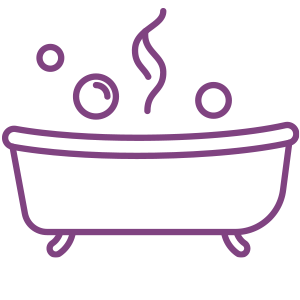
High Blood Pressure
Clary sage relaxes and widens blood vessels, thereby promoting and maintaining regular blood circulation.
Add 4 drops of clary sage oil with 1 tbs. (15ml) of carrier oil, and add to a warm bath.
or
Mix 3 drops with 1 tbs. (15ml) of carrier oil, and massage over the heart area.

Migraines
Add 2 drops of clary sage oil to 1/2 teaspoon (2,5ml) of coconut oil, and massage into the temples. Clary sage oil can relief migraine as it promotes blood circulation, and also has a sedative, gentle effect on the brain

Muscle cramps
Add 4 drops to 1 teaspoon (5ml) of carrier oil, and massage into the area of concern.
or
Dilute 5 drops with 1 tbs. (15ml) of carrier oil, and add to a warm bath.
Clary sage is a powerful muscle relaxant and its antispasmodic qualities help to ease painful tightening of muscles, which can result in cramps.

Oily Hair
Add 4 drops of clary sage oil to 30 ml of conditioner, and leave for 10 minutes. Rinse and style as normal. Clary sage aids in regulating sebum production on the scalp, helping to prevent oily hair.

Poor Circulation
Clary sage oil is excellent for boosting sluggish circulation and enhancing blood flow throughout the body. Mix 5 drops with 1 tablespoon of carrier oil and add it to a warm bath. For an extra circulation kick, finish with a cool shower for 20 seconds.

Stress & Anxiety
Clary sage oil offers significant relief during stressful times by relaxing muscles and soothing the mind. For quick relief, place 3 drops on a tissue or in an inhaler and inhale regularly, or diffuse 5 drops in your home to purify your space. You can also blend 4 drops with 1 teaspoon (5ml) of carrier oil to massage into your upper chest, neck, and shoulders for deeper relaxation.

Varicose Veins
Add 4 drops of clary sage oil to 1 tbs. (15ml) of carrier oil, and massage the entire limb in the direction of the heart. Never massage directly over varicose veins, gently massage on either side. Using clary sage oil regularly helps improve the appearance of varicose veins by promoting blood circulation around the body.
Skin type
Clary sage can be used alone or in blends for these skin types:
- Aging
- Dry
- Oily
- Blemished (pimples, acne or other)

Skincare
Clary sage essential oil is a wonderful addition to skincare routines due to its numerous benefits. Here's how it can enhance your skin health:
1. Balances Oil Production: Clary sage oil regulates sebum production, making it beneficial for both oily and dry skin types. It helps maintain a balanced complexion by preventing excessive oiliness or dryness. Add 3 drops of clary sage oil to 1 teaspoon of coconut oil, and massage into the face and neck. Repeat daily.
2. Anti-inflammatory Properties: The oil has anti-inflammatory qualities that can soothe skin inflammation, making it effective for conditions like acne, redness, and puffiness.
3. Antibacterial Effects: Its antibacterial properties help to keep the skin clean and reduce the occurrence of pimples and skin infections.
4. Antioxidant Protection: Clary sage contains antioxidants that protect the skin from oxidative stress and free radical damage, which can contribute to aging and skin deterioration.
5. Stress Reduction and Aromatherapy: The soothing scent of clary sage oil is known for its ability to calm the mind and reduce stress, which can also manifest benefits for skin health, as stress can exacerbate skin problems like acne and eczema.
6. Hormonal Balance: It is particularly noted for its ability to balance hormones, which can contribute to a clearer and healthier complexion, especially for those who experience hormonal acne.
Incorporating clary sage oil into your skincare regimen, whether through direct application diluted with a carrier oil, adding a few drops to your moisturizer, or using it in a facial steam, can help leverage these benefits for healthier, more radiant skin.
Method of use & Amount to use
Aroma diffusers
Use 5-15 drops in your diffuser or the amount suggested with your diffuser.
Baths, Hot tubs, Jacuzzis
Bath: Diluted 3-8 drops
Start by running your bath as you normally would and keep the bathroom door closed to retain the aroma. Essential oils can be applied directly in their concentrated form or diluted.
For dilution, use a carrier oil, milk, milk powder, vegetable glycerin, seaweed powder, herbal powder, baking soda, salt, or Epsom salts to prevent skin sensitivity.
Add the essential oil to the bathwater, either neat or diluted, then stir the water with your hand to disperse the oil evenly before entering the tub. This method helps distribute the essential oil throughout the bath for a more enjoyable experience.
Hot tubs & Jacuzzis: up to 8 drops
Mix the essential oil into the water thoroughly using your hand. Since essential oils do not dissolve in water, they may leave residues in or around your pipes.
Compresses
3-10 drops in 120 ml of water
Learn more
Face masks, oils, and tonic
Face masks: 1 or 2 drops per 2 tbs. (15ml) of natural facemask.
Face oils: 12 drops in 30ml of carrier oil. For elderly and children use 6 drops per 30ml of carrier oil.
Use a dark-colored glass bottle, which helps protect your oils from light degradation. First, pour in the carrier oil. If you’re using a single essential oil or a premixed blend, add it directly to the carrier oil. If you’re crafting your own unique blend, mix your essential oils together first, then integrate the desired number of drops into the carrier oil. Remember, a little goes a long way, so only use a small amount for each application. Click here to read more about which carrier oil to choose.
Face tonic: 8-15 drops in 100ml of spring or distilled water or hydrosol.
Combine the oil and water before filtering through an unbleached paper coffee filter.
Our 100% organic and natural hydrosols can be used directly as a tonic. Shut your eyes and spray your face. Or spray a cotton pad and wipe your face with it.
Inhalation from bowl
3-5 drops per bowl of steaming hot water.
To use essential oils in steam inhalation, start by bringing a pot of water to a boil and then removing it from the heat. Add a few drops (typically 3-5 drops) of your chosen essential oil to the hot water.
Carefully lean over the pot, drape a towel over your head and the pot to trap the steam, and breathe deeply for several minutes to inhale the aromatic vapors, which can help relieve nasal congestion and other respiratory issues.
Lotions & Creams
12 drops to each 30 ml of natural, unfragranced lotion or cream.
You can make your own face cream with our neutral face cream as a base. For a 2% (adults) dilution use 40 drops in this 100 ml cream base.
For elderly and children use 20 drops (1%) in 100ml of cream.
Massage oil (for body)
12 drops to each 30 ml of carrier oil.
For elderly and children use 6 drops per 30ml of carrier oil.
Pillows
Place 1-3 drops of essential oil on the corner or underside of a pillow away from the eyes.
Room sprays
As room purifier: 10-20 drops per 475 ml of water.
As a general fragrance: 8-10 drops per 475 ml of water.
Scalp treatments
Add 6 drops in 15 ml of Jojoba oil or aloe vera gel. Shake well. Use 2-3 drops of your prepared blend for each application. Massage into your scalp. Alternatively, simply add the essential oil to a bottle of final rinse water after washing the hair.
Shampoos
5-10 drops in 100ml.
Essential oils can be added to any unscented shampoo that is composed of organic natural ingredients.
Showers
1-5 drops.
First, complete your usual washing routine. After that, apply a few drops of essential oil onto a washcloth or sponge and briskly rub it over your body while standing under the shower's running water. Inhale deeply through your nose to enjoy the aromatic steam, being careful to avoid applying the oil on your face and sensitive areas.
Sprays & Mists for Face and Body
For body: 10-20 drops to each 475 ml of water or hydrosol.
For face: 2-5 drops to each 240 ml of water or hydrosol.
Add the essential oil to warm water or hydrosol. Shake thoroughly, pour through an unbleached paper coffee filter, and place in a spray bottle. Cool before using.
Shake before each use.
Keep eyes closed when spraying the face.
Washes
15-32 drops in 240 ml of warm water.
A wash is a prepared mixture for washing infected areas such as cuts, grazes, and wounds.
Mix the essential oils and water together in a bottle and shake well. Keep it stored in the fridge for no longer than 14 days. Shake before each use.

Aromatherapy's middle notes:
Aromas categorized as middle notes are typically warm, rich, and powerful. Their scent lasts for two to three days.
The body is highly receptive to these fragrances, making them ideal for healing and relaxation. Soothing and restorative.
Middle notes are ideal for healing treatments that require repeated sessions, such as for chronic muscle pain or respiratory issues. They are also effective for treating migraines, PMS, and menstrual pains.
Some middle notes should not be used during pregnancy, so check each oil before use.
Typical middle notes:
Floral oils: Chamomile, geranium, lemon balm
Warm spicy oils: Clove, nutmeg, anise, black pepper
Herbaceous oils: Fennel, juniper berry, marjoram sweet, rosemary
Understand the Notes of Scents
In aromatherapy, the scent of an oil is often referred to as a "note." The secret behind a truly great fragrance is finding the perfect balance between the notes. Aromatherapy is about scents, and with practice, you will be able to recognize an oil's fragrance even if you might not know which plant the oil comes from. For example, you will be able to distinguish between citrus and floral scents or woody and minty fragrances. The scent is determined by the chemicals an oil contains. Because oils that smell alike often contain the same chemicals, they typically have similar properties.
Oils are categorized into so-called base, middle, and top notes. Knowing an oil's note is important when blending oils. A good blend—like most perfumes—normally contains a mix of all three notes, where the ratio between them varies depending on what the blend is used for. Additionally, an oil can contain more than one note—for example, ylang-ylang contains traces of all three notes and is often considered the perfect fragrance.
When creating a new fragrance, whether it's for a perfume or an aroma diffuser, you should use between 4-7 oils per blend. First, decide what type of blend you want to create, such as a refreshing one, and then choose notes with these characteristics to make up the main content of the blend. Dissolve the mixture in a carrier oil if you want to use it on the skin (12 drops in 30 ml of carrier oil).
| Blend | Top note | Middle note | Base note |
|---|---|---|---|
| Refreshing | 5 drops | 4 drops | 1 drop |
| Relaxing | 1 drop | 6 drops | 3 drops |
| Sensual | 1 drop | 4 drops | 5 drops |
| Balancing | 2 drops | 5 drops | 3 drops |
| Energizing | 8 drops | 1 drop | 1 drop |
LAMIACEAE PLANT FAMILY
Clary sage is part of the Lamiaceae Plant Family
The Lamiaceae family, is a distinguished group in the botanical world, renowned for its aromatic members which are frequently utilized in both culinary and therapeutic contexts. This family includes some of the most beloved herbs and essential oils that are staples in both kitchens and aromatherapy practices.
Habitat and Climate Preferences
Lamiaceae plants are versatile and can be found in a variety of climates, thriving particularly well in temperate regions. They typically prefer sunny locations and well-drained soils. Despite their resilience, these plants flourish in Mediterranean climates where conditions of warm, dry summers and mild winters provide an ideal environment for growth. This adaptability also extends to higher altitudes in the tropics, where several species can often be found.
Regional Adaptations
Globally, members of the Lamiaceae family are widespread. In Europe, herbs like lavender, sage, and thyme are cultivated extensively and have become synonymous with the culinary landscape of the region. North America hosts a variety of native and naturalized species of mint and other Lamiaceae, adapting well to the diverse climates across the continent. Similarly, in Asia, particularly in regions like India, herbs such as basil and patchouli are integral to both the local aromatic profiles and traditional medicine.
Culinary and Aromatic Qualities
The Lamiaceae family's connection to the digestive process is embodied in their common use as culinary herbs. Herbs like basil, oregano, and marjoram are not just flavor enhancers; they also aid in digestion and can alleviate various gastrointestinal discomforts. Their robust, often fiery fragrances stimulate the senses and can reawaken a sense of vitality, making them popular in essential oil form for therapeutic use.
Other examples of Essential Oils
from the Lamiaceae Plant Family
- Basil and Oregano: Known for their bold, warm flavors in cooking, these oils also offer antibacterial and anti-inflammatory properties.
- Lavender and Lavandin: Highly regarded for their calming and relaxing effects, these oils are favorites in stress relief and sleep promotion.
- Peppermint and Spearmint: Energizing with a cooling effect, these mint oils are often used for pain relief and to enhance mental clarity.
- Rosemary and Sage: Both are thought to improve memory and cognitive function, in addition to being powerful antioxidants.
- Thyme: Its oil is potent in antibacterial and antiviral properties, making it a strong ally during cold and flu season.
- Melissa (Lemon Balm): Known for its soothing properties, it is used to ease stress and help with sleep.
- Patchouli: Often associated with skin care, it also helps in grounding and balancing the emotions.
The Lamiaceae plant family stands out not only for its culinary importance but also for its substantial role in natural health practices. Whether grown in a garden, wild in nature, or distilled into essential oils, these plants continue to impart their invigorating and healing qualities to those who know how to harness their power. The versatility and widespread appeal of the Lamiaceae family make it a foundational element in both traditional and modern herbal practices.
Clary Sage Blends Well With These Essential Oils
Amyris, bergamot, black pepper, cananga, cardamom, maroc and roman chamomile, coriander seed, cypress, damiana, geranium, jasmin, grapefruit, lavender, lemon, lime, mandarin, patchouli, rose absolute, rose otto, ravintsara (ho wood) rose absolute, sandalwood, tangerine, valerian.

The Main Chemical Composition of Clary sage Essential Oil
Clary sage essential oil, derived from the plant Salvia sclarea, is known for its distinctive herbaceous aroma and is highly valued in aromatherapy for its soothing and balancing properties. The main chemical components of clary sage essential oil are:
- Linalyl Acetate: This ester is a significant component of clary sage essential oil, comprising up to 56-78% of its makeup. It's known for its calming and relaxing properties, which make it beneficial for easing stress and promoting a feeling of well-being.
- Linalool: Accounting for about 10-30% of the oil’s composition, linalool is a monoterpene alcohol that contributes to the oil's sedative effects and helps in soothing anxiety and elevating mood.
These components synergistically contribute to clary sage essential oil’s ability to help with relaxation, stress reduction, and balancing of emotions, making it a popular choice in both therapeutic and personal care applications.
What is a Chemotype in Essential Oils?
Chemotypes in essential oils refer to the different chemical compositions that can occur in the same plant species due to variations in their growing conditions, harvest times, or geographical locations. These variations lead to the production of essential oils with distinct chemical profiles, each possessing unique therapeutic properties. Understanding chemotypes is crucial for aromatherapy and medicinal applications, as the efficacy and safety of the oils can vary significantly based on their chemical makeup.
Here's a breakdown of what defines a chemotype and why it matters:
1. Genetic and Environmental Influences: A chemotype is often influenced by the plant's environment, such as altitude, climate, and soil composition, as well as genetic factors. These variables can affect which chemical compounds are predominant in the oil.
2. Chemical Composition: Each chemotype of an essential oil will have a dominant chemical compound or set of compounds that characterize it. For example, Rosemary essential oil can be found in several chemotypes, such as cineole, camphor, and verbenone, each named after its principal component, which dictates its therapeutic properties and uses.
3. Therapeutic Properties: The presence of different chemical compounds means that each chemotype can be more effective for different health concerns. For instance, the cineole chemotype of Rosemary is excellent for respiratory issues due to its expectorant properties, whereas the camphor chemotype is more suited for pain relief and circulatory problems.
4. Safety and Application: Some chemotypes may be safer or more appropriate for certain applications than others. For example, an essential oil chemotype high in ketones might be more neurotoxic and thus used with more caution, particularly around children or pregnant women.
Clary sage is Safe to Diffuse around Pets
Pet Safe
If you have dogs and cats in the house, these are the recommendations on how to diffuse your essential oils in a safe way: only use 3-4 drops of a particular essential oil in a water based aroma diffuser (UltraSonic).
Use no more than 4-6 drops total if using more than one essential oil, or use the amount in the diffuser recipes.
Be sure your aroma diffuser is in an area where your pet cannot knock it over. Always diffuse in an open area with the door open so your pet can leave the room if desired.
If your pet is sensitive to an oil you are diffusing, stop diffusing and get your pet outside for some fresh air. Contact your veterinarian if you are concerned.
Storage
Essential oils are sensitive to UV: always keep them in their original bottles (amber glass with codigoutte).
We advise you to store them in a cool place without light after opening.
For your mixtures, cosmetic and culinary preparations, always use a new bottle to avoid interactions.
Disclaimer
This information is intended to educate and inform, and are not intended to diagnose, treat, cure, or prevent disease. It is always recommended to consult with a healthcare professional or veterinarian before starting any regime with Essential Oils.



